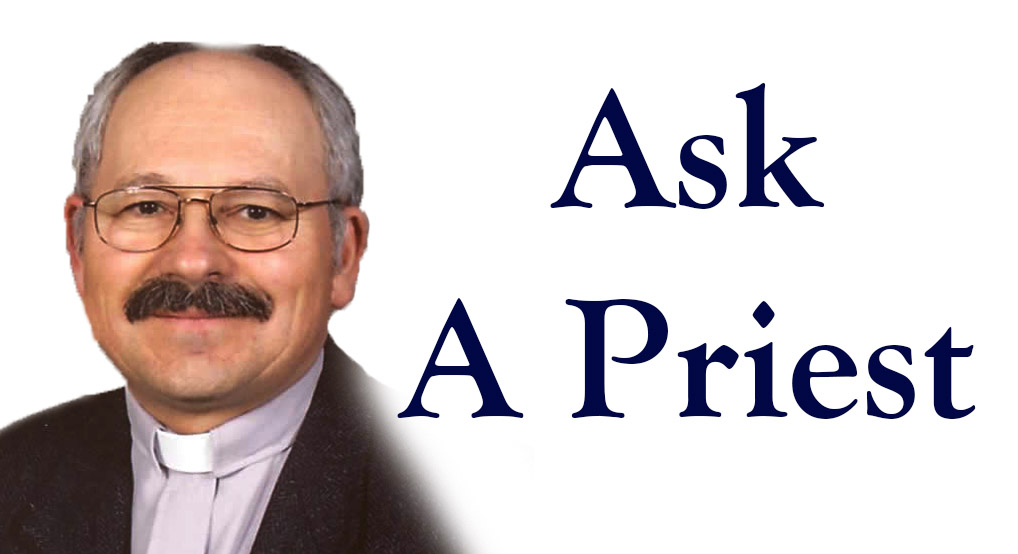The full question: I know that we as Ukrainian Catholics make the sign of the cross by touching our head, stomach, right shoulder, and then left shoulder, but I am really confused about bowing. What is the role of (and how should I perform) bows and similar prostrations both during the Liturgy and outside of it? Every time we make the sign of the cross, for instance, are we supposed to then bow, placing our right hand at our side as we do, or should the sign of the cross be made without bows all the time and/or on certain occasions only? Should we be bowing, like the Orthodox do, by making a belt-low bow after each petition in the Ektenia during the Divine Liturgy? Are there other times in church when we should be bowing? Are there resources for how to learn more about bowing rules, suggestions, history, etc. in the Ukrainian Catholic Church?
Thanks for your time, Father!
Response from: Fr. Planchak
Thank you for this very good question. I will try to answer it to the best of my ability, even though I am not an expert in liturgical rituals. As a boy, I noticed that in the parish where I was born, during Divine Liturgy, some people made the Sign of the Cross differently than others (extending the hand to the ground). I later learned that most of our Ukrainian Greek Catholics immigrated from Galicia to that area, and those people who were making the Sign of the Cross differently came from another region in Ukraine.
As a priest, I have had the opportunity to travel to all the Eparchies of North America, some in Western Europe, and a few in Ukraine. I noticed that there are some differences not only when the people, but also some priests, make the sign of the cross, and I don’t mean those who make the Sign of the Cross carelessly. I do not think the diversity in our church is something foreign or unusual.
In 1944 the Sacred Congregation for the Eastern Churches gave our Church a document entitled Ordo Celebrationis, regarding the proper celebration of the Divine Services. In that instruction we find the following:
General Rules
The small bow: inclining the head and shoulders slightly while making the Sign of the Cross, without extending the hand to the knees or to the ground, either before or after the Sign of the Cross, is used on these occasions:
Upon entering and leaving the church, Blessed is the kingdom, … at every mention of the Most Holy Trinity (for example, Glory be to the Father, Son…), at the Trisagion three times or: We bow to your Cross, … proclamation of the Gospel, when the priest proclaims “Peace be with you”, at the words of consecration priest and deacon make a deep bow (low or profound bow – there are different translations)
The great bow or the great metania (the Sign of the Cross upon oneself prostrating one’s entire body to the ground) is used only during Great Lent and in the Service of the Presanctified Gifts.
The Sign of the Cross is a very meaningful gesture. This gesture has been practiced in the church since the earliest times of the church’s beginning.
Throughout the history of Christianity there has been a gradual development in the making of the Sign of the Cross. It is important to mention that until the 13th century, the Western and Eastern Churches were making the Sign of the Cross the way we and our Orthodox brothers and sisters do. While recognizing this common practice, Pope Innocent III admitted that, “Others, however, make the sign of the cross from the left to the right, because from misery (left) we must cross over to glory (right), just as Christ crossed over from death to life, and from Hades to Paradise.”
In your question, you ask if we should do the Sign of the Cross as often as our Orthodox brothers and sisters do? In 1996, more than 50 years after Ordo Celebrationis, the Vatican issued a Liturgical Instruction to the Eastern Catholic Churches that states “In every effort of liturgical renewal, therefore, the practice of the Orthodox brethren should be taken into account, knowing it, respecting it, and distancing from it as little as possible so as not to increase the existing separation; but rather intensifying efforts in view of eventual adaptations, maturing and working together.”(21)
In the Church, change does not happen as quickly as in people’s lives. Human life is very short in comparison with the life of the Church. Since 1996 instructions have been given to our church. Some changes have been accepted and we are now doing what was considered Orthodox, for example, baptism of children by immersion, giving Holy Communion to the babies and small children, etc. I believe that in the future there will be some progress on this issue as well.
In conclusion, no matter how one makes the Sign of the Cross and how often, the Western or the Eastern way, the gesture should be made piously, conscientiously, with great reverence, and with the thought of the Holy Trinity. When we make the Sign of the Cross on ourselves, we invoke God’s blessing on ourselves. When we touch the forehead, then the chest, and move to the right shoulder, and then the left with devotion, we remind ourselves of the need for repentance as well as, and this is equally significant, to “take up your cross” and follow the Lord.

